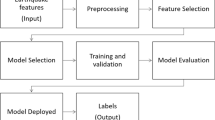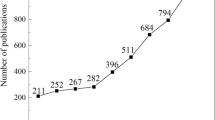Abstract
On November 18, 2017, an Ms 6.9 earthquake struck Milin County, Linzhi City, Tibet, China, triggering a large number of co-seismic landslides. The epicenter was located at the end of the Eastern Himalayan Syntaxis, an area with rapid uplift and strong tectonic rotation deformation. As co-seismic landslides are one of the most important hazard phenomena in hilly and seismically active mountainous regions, it is essential to accurately map the potentially hazardous areas. This study presents a novel model combining the logistic regression–information value (LRIV) and Newmark displacement model for landslide hazard assessment, following regional-scale mapping and occurrence probability evaluation in the Eastern Himalayan Syntaxis region. The combined LRIV–Newmark displacement model can comprehensively consider the geological and environmental factors of co-seismic landslides, including the mechanical landslide mechanism, local topography (slope aspect, elevation, and topographic relief), distance to main rivers, and difference between the hanging and foot walls of seismogenic faults. Based on the factor multicollinearity and the significance test, there was no multicollinearity among the six conditioning factors, and all factors significantly influenced the occurrence of co-seismic landslides. The results showed good model performance in the study area, with an area under the receiving operating characteristic curve of 0.955, which is a significant improvement over that of the Newmark displacement model alone. The combined model could facilitate co-seismic landslide disaster reduction and prevention in steep and mountainous regions.











Similar content being viewed by others
References
Arabameri A, Saha S, Roy J et al (2020) Landslide susceptibility evaluation and management using different machine learning methods in the Gallicash River Watershed. Iran Remote Sens 12(3):475
Arias A (1970) A measure of earthquake intensity. Seismic Design for Nuclear Power Plants. Massachussetts Institute of Technology Press, Cambridge, MA 438–483
Bewick V, Cheek L, Ball J (2005) Statistics review 14: logistic regression. Crit Care 9(1):1–7
Chang KT, Chiang SH, Hsu ML (2007) Modeling typhoon-and earthquake-induced landslides in a mountainous watershed using logistic regression. Geomorphology 89(3–4):335–347
Chen W, Xie X, Wang J et al (2017) A comparative study of logistic model tree, random forest, and classification and regression tree models for spatial prediction of landslide susceptibility. CATENA 151:147–160
Dai FC, Xu C, Yao X et al (2011) Spatial distribution of landslides triggered by the 2008 Ms 8.0 Wenchuan earthquake, China. J Asian Earth Sci 40(4):883–895
Du G, Zhang Y, Yang Z et al (2017) Estimation of seismic landslide hazard in the eastern Himalayan Syntaxis region of Tibetan plateau. Acta Geologica Sinica-English Edition 91(2):658–668
Du G, Zhang Y, Yang Z et al (2019) Landslide susceptibility mapping in the region of eastern Himalayan syntaxis, Tibetan Plateau, China: a comparison between analytical hierarchy process information value and logistic regression-information value methods. Bull Eng Geol Env 78(6):4201–4215
Du J, Glade T, Woldai T et al (2020) Landslide susceptibility assessment based on an incomplete landslide inventory in the Jilong Valley, Tibet. Chinese Himalayas Eng Geol 270:1005572
Fan X, Scaringi G, Xu Q et al (2018) Coseismic landslides triggered by the 8th August 2017 M s 7.0 Jiuzhaigou earthquake (Sichuan, China): factors controlling their spatial distribution and implications for the seismogenic blind fault identification. Landslides 15(5):967–983
Ge H, Chen QG, Wang DW (2013) The assessment and mapping of seismic landslide hazards: a case study of Yingxiu area. Sichuan Province Geology in China 40(2):644–652 (In Chinese)
Godt J, Sener B, Verdin KL et al (2008) Rapid assessment of earthquake-induced landsliding. Proceedings of the First World Landslide Forum, United Nations University, Tokyo 4:219–222
Harp EL, Wilson RC (1995) Shaking intensity thresholds for rock falls and slides: evidence from 1987 Whittier Narrows and Superstition Hills earthquake strong-motion records. Bull Seismol Soc Am 85(6):1739–1757
Huang RQ, Li WL (2009) Fault effect analysis of geo-hazard triggered by Wenchaun earthquake. J Eng Geol 17(1):19–28 (In Chinese)
Hsieh SY, Lee CT (2011) Empirical estimation of the Newmark displacement from the Arias intensity and critical acceleration. Eng Geol 122(1–2):34–42
Jibson RW, Harp EL, Michael JA (2000) A method for producing digital probabilistic seismic landslide hazard maps. Eng Geol 58(3–4):271–289
Jibson RW (2007) Regression models for estimating coseismic landslide displacement. Eng Geol 91(2–4):209–218
Jibson RW (2011) Methods for assessing the stability of slopes during earthquakes—a retrospective. Eng Geol 122(1–2):43–50
Jibson RW (2014) Mapping seismic landslide hazards in Anchorage, Alaska. Proceedings of the 10th National Conference in Earthquake Engineering, Earthquake Engineering Research Institute, Anchorage, AK, USA 21–25
Jin KP, Yao LK, Cheng QG et al (2019) Seismic landslides hazard zoning based on the modified Newmark model: a case study from the Lushan earthquake, China. Nat Hazards 99(1):493–509
Keefer DK (1984) Landslides caused by earthquakes. Geol Soc Am Bull 95(4):406–421
Keefer DK (2002) Investigating landslides caused by earthquakes–a historical review. Surv Geophys 23(6):473–510
Khazai B, Sitar N (2004) Evaluation of factors controlling earthquake-induced landslides caused by Chi-Chi Earthquake and comparison with the Northridge and Loma Prieta events. Eng Geol 71(1–2):79–95
Larsen IJ, Montgomery DR (2012) Landslide erosion coupled to tectonics and river incision. Nat Geosci 5(7):468–473
Ma S, Xu C (2019a) Applicability of two Newmark models in the assessment of coseismic landslide hazard and estimation of slope-failure probability: an example of the 2008 Wenchuan Mw 7.9 earthquake affected area. J Earth Sci 30(5):1020–1030
Ma S, Xu C (2019b) Assessment of co-seismic landslide hazard using the Newmark model and statistical analyses: a case study of the 2013 Lushan, China, Mw6. 6 earthquake. Nat Hazards 96(1):389–412
Mondal S, Maiti R (2013) Integrating the analytical hierarchy process (AHP) and the frequency ratio (FR) model in landslide susceptibility mapping of Shiv-khola watershed, Darjeeling Himalaya. Int J Disaster Risk Sci 4(4):200–212
Newmark NM (1965) Effects of earthquakes on dams and embankments. Geotechnique 15(2):139–160
Pradhan B, Lee S (2010) Landslide susceptibility assessment and factor effect analysis: backpropagation artificial neural networks and their comparison with frequency ratio and bivariate logistic regression modelling. Environ Model Softw 25(6):747–759
Rajabi AM, Khodaparast M, Mohammadi M (2021) Earthquake-induced landslide prediction using back-propagation type artificial neural network: case study in northern Iran. Nat Hazards 1–16
Razavizadeh S, Solaimani K, Massironi M et al (2017) Mapping landslide susceptibility with frequency ratio, statistical index, and weights of evidence models: a case study in northern Iran. Environ Earth Sci 76(14):1–16
Rodríguez-Peces MJ, García-Mayordomo J, Azañón JM et al (2014) GIS application for regional assessment of seismically induced slope failures in the Sierra Nevada Range, South Spain, along the Padul Fault. Environ Earth Sci 72(7):2423–2435
Roback K, Clark MK, West AJ et al (2018) The size, distribution, and mobility of landslides caused by the 2015 Mw7. 8 Gorkha earthquake, Nepal. Geomorphology 301:121–138
Romeo R (2000) Seismically induced landslide displacements: a predictive model. Eng Geol 58(3-4):337–351
Shao CR, You HC, Cao ZQ et al (2008) Tectonic characteristics and seismic activities of Yaluzangbu Grand Canyon, Tibet, China. Technol Earthquake Disaster Prevent 12(4):398–412 (In Chinese)
Sharma S, Mahajan AK (2019) A comparative assessment of information value, frequency ratio and analytical hierarchy process models for landslide susceptibility mapping of a Himalayan watershed, India. Bull Eng Geol Env 78(4):2431–2448
Shinoda M, Miyata Y, Kurokawa U et al (2019) Regional landslide susceptibility following the 2016 Kumamoto earthquake using back-calculated geomaterial strength parameters. Landslides 16(8):1497–1516
Singh K, Kumar V (2018) Hazard assessment of landslide disaster using information value method and analytical hierarchy process in highly tectonic Chamba region in bosom of Himalaya. J Mt Sci 15(4):808–824
Travasarou T, Bray JD, Abrahamson NA (2003) Empirical attenuation relationship for Arias intensity. Earthquake Eng Struct Dynam 32(7):1133–1155
Umar Z, Pradhan B, Ahmad A et al (2014) Earthquake induced landslide susceptibility mapping using an integrated ensemble frequency ratio and logistic regression models in West Sumatera Province, Indonesia. CATENA 118:124–135
Wang KL, Lin ML (2010) Development of shallow seismic landslide potential map based on Newmark’s displacement: the case study of Chi-Chi earthquake, Taiwan. Environ Earth Sci 60(4):775–785
Wang T, Wu S, Shi J et al (2015) Concepts and mechanical assessment method for seismic landslide hazard: a review. J Eng Geol 23(1):93–104 (In Chinese)
Wang T, Wu SR, Shi JS et al (2013) Application and validation of seismic landslide displacement analysis based on Newmark model: a case study in Wenchuan earthquake. Acta Geologica Sinica (english Edition) 87(z1):393–397
Wang Y, Song C, Lin Q et al (2016) Occurrence probability assessment of earthquake-triggered landslides with Newmark displacement values and logistic regression: The Wenchuan earthquake, China. Geomorphology 258:108–119
Wei W, Xie C, Zhou B, et al (2018) Location of the mainshock and aftershock sequences of the M6.9 Mainling earthquake, Tibet. Chinese Sci Bull 63(15):1493–1501 (In Chinese)
Xi W, Li G, Moayedi H et al (2019) A particle-based optimization of artificial neural network for earthquake-induced landslide assessment in Ludian county, China. Geomat Nat Haz Risk 10(1):1750–1771
Xu C, Xu X, Dai F et al (2012a) Comparison of different models for susceptibility mapping of earthquake triggered landslides related with the 2008 Wenchuan earthquake in China. Comput Geosci 46:317–329
Xu C, Dai F, Xu X et al (2012b) GIS-based support vector machine modeling of earthquake-triggered landslide susceptibility in the Jianjiang River watershed, China. Geomorphology 145:70–80
Xu C, Xu X, Yao X, et al (2014) Three (nearly) complete inventories of landslides triggered by the May 12, 2008 Wenchuan Mw 7.9 earthquake of China and their spatial distribution statistical analysis. Landslides 11(3):441–461
Xu C, Xu X, Shyu JBH (2015) Database and spatial distribution of landslides triggered by the Lushan, China Mw 6.6 earthquake of 20 April 2013. Geomorphology 248:77–92
Xu C, Xu X, Yu G (2013) Landslides triggered by slipping-fault-generated earthquake on a plateau: an example of the 14 April 2010, Ms 7.1, Yushu, China earthquake. Landslides 10(4):421–431
Xu Q, Li WL (2010) Study on the direction effects of landslides triggered by Wenchuan earthquake. J Sichuan Univ (engineering Science Edition) 42(S1):7–14
Ye J, Zhao J, Liu H, et al (2020) Aftershocks localization and shallow crustal velocity structure following the Ms6. 9 Mainling earthquake in Tibet, China. Chinese Sci Bull 65(15):1496–1505 (In Chinese)
Yilmaz I (2009) Landslide susceptibility mapping using frequency ratio, logistic regression, artificial neural networks and their comparison: a case study from Kat landslides (Tokat-Turkey). Comput Geosci 35(6):1125–1138
Yin XZ, Zhou BG, Chen J H, et al (2018) Spatial-temporal distribution characteristics of early aftershocks following the M 6.9 Mainling earthquake in Tibet, China. Chinese J Geophys 61(6):2322–2331(In Chinese)
Yin KL, Yan TZ (1988) Statistical prediction model for slope instability of metamorphosed rocks. Proceedings of the 5th international symposium on landslides, Lausanne, Switzerland 2:1269–1272
Yuan R, Deng Q, Cunningham D, et al (2016) Newmark displacement model for landslides induced by the 2013 Ms 7.0 Lushan earthquake, China. Front Earth Sci 10(4):740–750
Yue X, Wu S, Yin Y et al (2018) Risk identification of seismic landslides by joint Newmark and RockFall analyst models: a case study of roads affected by the Jiuzhaigou earthquake. Int J Disaster Risk Sci 9(3):392–406
Zhao B, Li W, Wang Y et al (2019) Landslides triggered by the Ms 6.9 Nyingchi earthquake, China (18 November 2017): analysis of the spatial distribution and occurrence factors. Landslides 16(4):765–776
Zhou SH, Wang W, Chen GQ et al (2016) A combined weight of evidence and logistic regression method for susceptibility mapping of earthquake-induced landslides: a case study of the April 20, 2013 Lushan earthquake. China Acta Geologica Sinica (english Edition) 90(2):511–524
Funding
This study was supported by the National Natural Science Foundation of China (41941017, 41807231, 41731287 and 42277166).
Author information
Authors and Affiliations
Corresponding author
Ethics declarations
Conflict of interest
The authors declare no competing interests.
Rights and permissions
Springer Nature or its licensor holds exclusive rights to this article under a publishing agreement with the author(s) or other rightsholder(s); author self-archiving of the accepted manuscript version of this article is solely governed by the terms of such publishing agreement and applicable law.
About this article
Cite this article
Du, G., Zhang, Y., Zou, L. et al. Co-seismic landslide hazard assessment of the 2017 Ms 6.9 Milin earthquake, Tibet, China, combining the logistic regression–information value and Newmark displacement models. Bull Eng Geol Environ 81, 446 (2022). https://doi.org/10.1007/s10064-022-02901-x
Received:
Accepted:
Published:
DOI: https://doi.org/10.1007/s10064-022-02901-x




